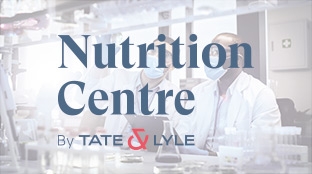Dietary fibre is one of the most studied nutrients in the scientific literature. However, many myths still surround this topic.
*This article is part of a series of resources aimed at health care professionals
1 - A diet rich in fibre can help with weight loss
Truth. Numerous scientific studies report that dietary fibres help in reducing body weight, appetite and energy intake. Potential mechanisms that have been associated with this are:
- Fibre can produce an increased feeling of satiety, as a result of delaying gastric emptying.
- Use of fibres can help to reduce the amount of energy in food and beverages, especially when replacing glycaemic carbohydrates.
- Specific fibres can promote the growth of beneficial bacteria in the gut, producing substances that regulate appetite, such as short-chain fatty acids.
For weight loss, a combination of different approaches is necessary, since weight gain is multifactorial. The inclusion of dietary fibres in the diet, the practice of physical activity, and stress management are effective strategies.
2 - Intake of dietary fibre impairs the absorption of minerals from the diet.
Myth. Dietary fibre can help with the absorption of minerals. The action of dietary fibre is commonly confused with that of other antinutritional factors, which are substances that interfere in the digestibility and absorption of nutrients, such as minerals. For example, phytate, oxalate, tannin, nitrite and nitrate.
There are three proposed mechanisms regarding the action of prebiotic fibres in improving mineral absorption. The first proposed mechanism is that short-chain fatty acids produced as a result of fibre fermentation increase gut absorption surface area improving absorption of minerals such as calcium, zinc and magnesium. The second is that short-chain fatty acids reduce gut pH, increasing solubilisation of minerals and improving their absorption and utilisation. The third is that some dietary fibres can produce an increase in bacteria linked with calcium absorption. Due to all these mentioned mechanisms, the inclusion of dietary fibres in the diet in an adequate amount is essential to maintain proper intestinal health.
3 - Some fibres have better gastrointestinal tolerance.
Truth. Digestive tolerance is impacted by many factors such as food matrix, personal eating habits, gender, diseases or digestive disorders, and an individual’s specific microbiota profile. Specific tolerance of fibres depends on structure, solubility, viscosity, length of the fibre chain, location and speed of fermentation and amount of fibre consumed in one go.
The first strategy to increase fibre tolerance is to choose the types of fibre that are well tolerated. For this, it is necessary to look at the product labels to know which fibre is used in foods and beverages. An example of a fibre that is well tolerated is soluble corn fibre, which can also be found on labels as soluble fibre, soluble gluco fibre and resistant maltodextrin. Other important strategies to increase tolerance of dietary fibre are to introduce it gradually into the diet and distribute servings of sources of fibre throughout the day.
4 - The only benefit of dietary fibre is to support gut health
Myth. Dietary fibre does promote gut health, however, as more science is done on fibre the known benefits have expanded. Nowadays fibres’ role is recognised in glycaemic response, in satiety contributing to weight management, prebiotic benefits, modulation of gut microbiota, absorption of calcium for bone health, and even immune and cognitive health benefits. So, the benefits of fibre expand well beyond the gut!
5 - It's easy to reach the recommendation of 25 g of fibre per day
Myth. It is possible to achieve the recommended daily amount of fibres with a varied diet. However, it is not easy to achieve this as it may be difficult to eat the necessary amount of food without overconsuming calories. Thus, a good strategy is to choose added fibre versions of foods and beverages that are normally part of the diet, such as bread, dairy products, juices, among others.
Another strategy is to ensure fibre-rich foods at every meal, for example, fruits, vegetables, and greens, combined with whole foods, nuts (walnuts, Brazil nuts, hazelnuts, almonds) and legumes (beans, peas, chickpeas, lentils). Try a green juice, seeds on a salad, vegetables in an omelette, fruit with the peel and pulp whenever possible. If the amount of dietary fibre cannot be reached by the diet, the use of supplements can be considered, with the recommendation of a specialised professional.
Dietary fibres are carbohydrate polymers with ten or more monomeric units, which are not hydrolysed by the human enzymes and are not absorbed in the small intestine, arriving intact in the large intestine where they get broken down, with the help from gut bacteria. The physiological effects of fibres are dependent on their structure.
To read more about the research we mention see these publications/studies:
Namazi N, Larijani B, Azadbakht L. Are Isolated and Complex Fibre Supplements Good Choices for Weight Management? A Systematic Review. Arch Iran Med. 2017 Nov 1;20(11):704-713.
Pérez-Conesa D, López G, Abellán P, Ros G. Bioavailability of calcium, magnesium and phosphorus in rats fed probiotic, prebiotic and synbiotic powder follow-up infant formulas and their effect on physiological and nutritional parameters. J. Sci. Food Agric. 2006, 86, 2327–2336.
Raschka L, Daniel H. Mechanisms underlying the effects of inulin-type fructans on calcium absorption in the large intestine of rats. Bone. 2005 Nov;37(5):728-35.
Scholz-Ahrens KE, Schaafsma G, van den Heuvel EG, Schrezenmeir J. Effects of prebiotics on mineral metabolism. Am J Clin Nutr. 2001 Feb;73(2 Suppl):459S-464S.
Weaver CM, Martin BR, Story JA, Hutchinson I, Sanders L. Novel fibres increase bone calcium content and strength beyond efficiency of large intestine fermentation. J Agric Food Chem. 2010 Aug 25;58(16):8952-7.
By Dr. Leila Hashimoto
Nutritionist with a PhD in Food Science from the Faculty of Pharmaceutical Sciences at the University of São Paulo (FCP-USP), Brazil.
Dr. Hashimoto specialises in sports nutrition and is a speaker, scientific consultant and author of scientific publications. She has 10 years of work experience in laboratory research.

Nutrition plays a key role in consumers’ lives
We address the health and nutritional needs of your consumers using our science-based innovative ingredient solutions. Discover how in our Nutrition Centre...
